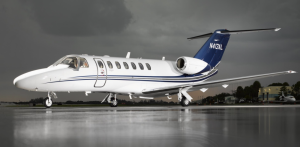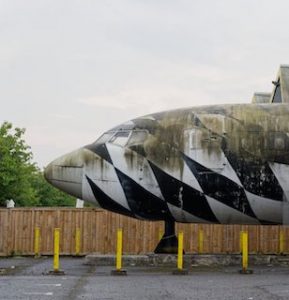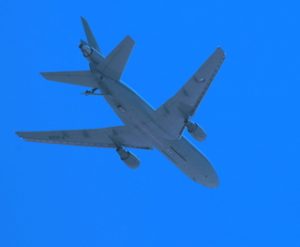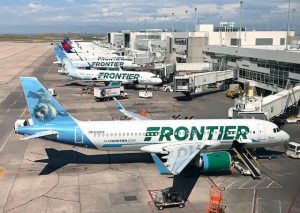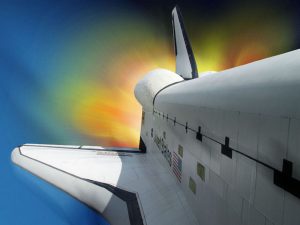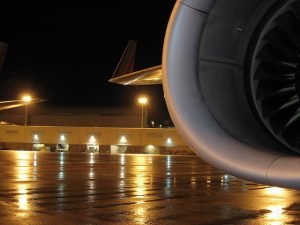The Aeronautical Maintenance Technician Course Syllabus
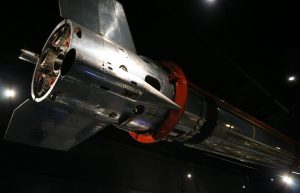 The role of an aeronautical maintenance technician is critical in ensuring the safety, functionality, and efficiency of aircraft. These professionals are responsible for inspecting, maintaining, and repairing all types of aircraft, including airplanes, helicopters, and jets. Their work spans a range of systems from engines and electronics to hydraulics and structural components, making aeronautical maintenance a highly specialized and demanding field. For anyone looking to pursue a career in this area, a structured and well-rounded course syllabus is essential. This article explores the typical course syllabus for an aeronautical maintenance technician program, covering its core modules and key learning outcomes.
The role of an aeronautical maintenance technician is critical in ensuring the safety, functionality, and efficiency of aircraft. These professionals are responsible for inspecting, maintaining, and repairing all types of aircraft, including airplanes, helicopters, and jets. Their work spans a range of systems from engines and electronics to hydraulics and structural components, making aeronautical maintenance a highly specialized and demanding field. For anyone looking to pursue a career in this area, a structured and well-rounded course syllabus is essential. This article explores the typical course syllabus for an aeronautical maintenance technician program, covering its core modules and key learning outcomes.
Aeronautical maintenance technician course
Aeronautical maintenance technician course is designed to equip students with the knowledge and skills required to maintain and repair aircraft. Typically offered by aviation schools, technical colleges, or specialised training institutes, these programs focus on hands-on experience, practical applications, and compliance with regulatory standards, such as those set by aviation authorities like the FAA or EASA. The syllabus usually includes theoretical learning, laboratory work, and practical training sessions.
Subjects in an aeronautical maintenance technician course
A comprehensive aeronautical maintenance technician course covers a broad range of subjects essential to aircraft maintenance. These subjects encompass everything from aircraft systems and materials to maintenance practices and safety regulations. Below is a breakdown of the typical core subjects that form part of the course syllabus.
1) Aircraft maintenance principles
This subject introduces students to the fundamental principles of aeronautical maintenance. It covers the theoretical and practical aspects of maintaining aircraft systems, focusing on regulatory requirements, aircraft operation, and maintenance standards. Students will learn about the various types of maintenance tasks, including routine inspections, overhauls, and repairs. Topics include:
-
- Maintenance schedules
- Maintenance documentation and record-keeping
- Regulatory frameworks
- Inspection procedures
- Basic fault diagnosis and troubleshooting
2) Aircraft structures and materials
Understanding the structure and materials used in aircraft construction is crucial for any aeronautical maintenance technician. This module delves into the design, construction, and materials used in aircraft, emphasizing how these components are maintained. Students will gain knowledge of metallic and composite materials, along with the effects of stress, fatigue, and corrosion on aircraft structures. Topics covered in this area include:
-
- Aircraft construction methods
- Types of materials
- Structural repairs and reinforcements
- Stress analysis and load-bearing structures
- Corrosion prevention and control
3) Power plant and engine maintenance
Engines are the heart of any aircraft, and maintaining them is one of the most critical responsibilities of an aeronautical maintenance technician. This section of the syllabus focuses on the various types of aircraft engines, jet engines, turboprop engines, and piston engines, and the maintenance practices associated with each. The module also covers fuel systems, lubrication, and the performance monitoring of engines. Key topics include:
-
- Jet engine mechanics and operation
- Piston engine maintenance
- Turboprop systems and components
- Fuel systems, filtration, and delivery
- Engine diagnostics and troubleshooting
- Engine performance testing and calibration
4) Avionics and electrical systems
The avionics and electrical systems of an aircraft are crucial for navigation, communication, and overall operation. This module focuses on the electrical systems of an aircraft, covering the intricacies of wiring, circuitry, and avionics equipment. Students will also learn to diagnose and repair electrical faults in aircraft systems. Key topics include:
-
- Aircraft electrical systems
- Avionics systems
- Electrical circuit testing and diagnostics
- Battery and power distribution systems
- Instrumentation systems and sensors
- Aircraft lighting systems
5) Hydraulics and pneumatics
Hydraulic and pneumatic systems play a vital role in aircraft operation, especially for systems like landing gear, brakes, and flight control surfaces. This part of the syllabus teaches students about the operation, maintenance, and repair of these systems. The course includes practical applications in inspecting, servicing, and troubleshooting hydraulic and pneumatic systems. Topics include:
-
- Hydraulic principles and systems
- Pneumatic systems and their role in aircraft
- Hydraulic fluid types and properties
- Landing gear and braking systems
- Flight control surface hydraulics
- Fault diagnosis and repair techniques
6) Aircraft instruments and control systems
Modern aircraft rely heavily on advanced instrumentation and control systems to ensure safe and efficient operation. This module covers the various instruments used in aircraft, including altimeters, airspeed indicators, and gyroscopes, and how to maintain and calibrate them. Students will learn how these systems interact with avionics and other control systems to provide pilots with critical flight data. Topics include:
-
- Pitot-static systems and instrumentation
- Flight data recording systems
- Automatic flight control systems
- Calibration and adjustment of aircraft instruments
- Autopilot and manual override systems
7) Safety and environmental regulations
Safety is paramount in aviation, and aeronautical maintenance technicians must be well-versed in aviation safety regulations and environmental standards. This subject focuses on the importance of adhering to regulatory requirements, accident prevention, and risk management. It also covers environmental concerns, such as the handling and disposal of hazardous materials and the environmental impact of aircraft maintenance activities. Key areas covered include:
-
- Aviation safety protocols
- Workplace safety and personal protective equipment
- Hazardous material handling and disposal
- Emergency response procedures
- Fire prevention and suppression
- Environmental regulations in aviation
Practical training and hands-on experience
The most important aspect of any aeronautical maintenance technician course is the emphasis on practical training. While theoretical knowledge is critical, students must also be able to apply their skills in real-world settings. Most programs include a substantial portion of hands-on experience, either in a laboratory or a live aircraft maintenance environment.
Laboratory and workshop sessions
In these sessions, students work with actual aircraft components, learning how to disassemble, inspect, repair, and reassemble various parts of the aircraft. They also gain experience using specialized tools and diagnostic equipment. Laboratory sessions cover areas such as:
-
- Engine disassembly and inspection
- Electrical circuit testing and troubleshooting
- Hydraulic system servicing and maintenance
- Avionics system installation and calibration
- Aircraft structural repairs
Internships and industry placements
Many aeronautical maintenance programs offer internship or industry placement opportunities, where students can gain on-the-job experience working with certified technicians in an actual maintenance facility. These placements provide invaluable insights into the day-to-day responsibilities of an aeronautical maintenance technician and help students build connections within the industry.
Exams and certifications
At the end of the aeronautical maintenance technician course, students are typically required to pass a series of exams to demonstrate their competence. These exams often include both written and practical assessments. Depending on the country or region, students may also need to obtain certification from a recognised aviation authority, such as the FAA, EASA, or CAA.
FAA certification
In the United States, students aiming to become certified aeronautical maintenance technicians must pass the FAA’s Airframe and Power plant certification exams. These exams cover all aspects of aircraft maintenance, including engines, structures, and systems. The certification process includes:
-
- Written exams for both airframe and powerplant systems
- Oral exams to assess knowledge of regulatory standards and maintenance practices
- Practical tests to evaluate hands-on skills
EASA certification
In Europe, aspiring aeronautical maintenance technicians must obtain certification from the European Union aviation safety agency. The EASA certification process includes a combination of theoretical exams, practical assessments, and industry experience. Technicians typically pursue a Part 66 license, which qualifies them to perform maintenance on specific types of aircraft.
Career opportunities and industry demand
The demand for qualified aeronautical maintenance technicians is projected to grow steadily as global air travel continues to expand. The aviation industry requires well-trained technicians to ensure the safety and airworthiness of aircraft, leading to ample job opportunities in various sectors, including commercial airlines, private aviation, and military aviation.
Commercial aviation
Many aeronautical maintenance technicians find employment with commercial airlines, where they perform routine inspections, repairs, and overhauls on passenger aircraft. Technicians in this sector work in maintenance hangars or on the flight line, ensuring that aircraft meet all safety and regulatory standards before each flight.
Military aviation
In the military, aeronautical maintenance technicians play a crucial role in maintaining the operational readiness of aircraft. Technicians may work on fighter jets, transport planes, helicopters, or unmanned aerial vehicles, supporting a wide range of missions.
General aviation and private aviation
Private aircraft owners and operators also rely on aeronautical maintenance technicians to maintain their planes. In this sector, technicians may work for fixed-base operators or private maintenance facilities that service corporate jets, recreational aircraft, and other privately owned planes.
Syllabus to succeed
The aeronautical maintenance technician course syllabus provides a comprehensive foundation for anyone looking to pursue a career in aviation maintenance. By covering core subjects such as aircraft structures, engine systems, avionics, and safety regulations, the course equips students with the knowledge and skills needed to succeed in the field. With hands-on training and industry certifications, graduates of aeronautical maintenance programs are well-prepared to enter the workforce and contribute to the safety and efficiency of the global aviation industry.

